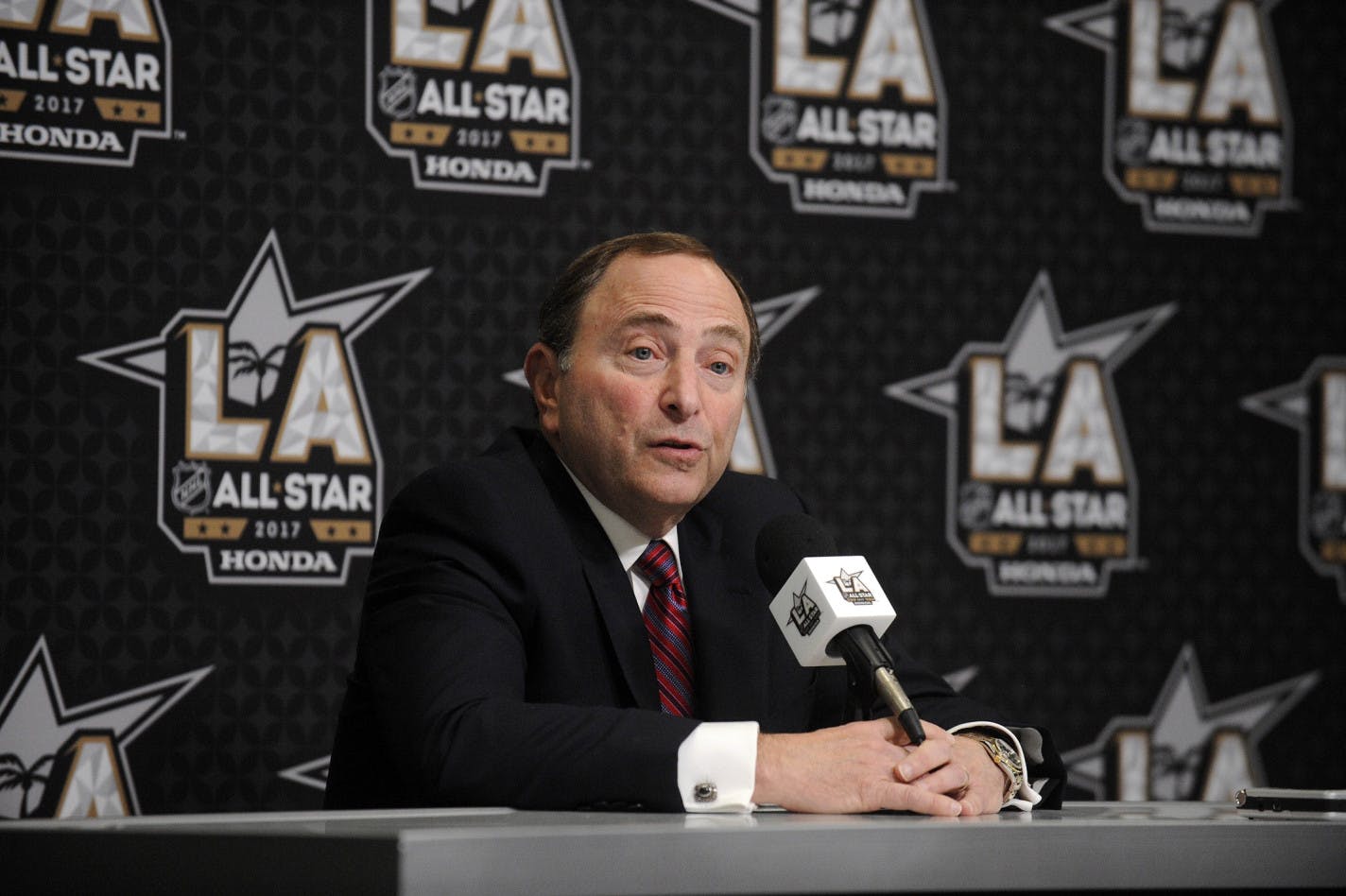How a potential 2020 lockout would affect the Leafs

By Jon Steitzer
4 years agoFew topics are more of a downer than a pending NHL lockout. The 2004-5 lockout essentially closed the Leafs window for being competitive in the Quinn years, and the organization’s inability to see the new direction of the league partnered with several crippling contracts put the organization into it’s darkest decade, with all due respect to the Ballard years.
The 2012-13 NHL lockout was a different story for the Leafs. Somehow that managed to be the high watermark before reality came crashing down on Toronto once again. The shortened season meant that James Reimer didn’t regress until the playoffs, and we were at least treated to seven playoff games that the Leafs frankly had no right being in. Sadly this season needs to be looked at as a positive, even it means it bought both Randy Carlyle and Dave Nonis a bit more time.
That brings us to present day, and two very important dates that are coming up.
September 1st is the NHL owners opportunity to call for an early end to the CBA, set to expire in 2022. Opting out now would end the CBA on September 15, 2020 instead, and given recent history, we have no reason to believe that a lockout would be resolved quickly. What we can point to as a source of optimism is that with Seattle entering the league soon, and with TV contracts expiring in the near future, the NHL isn’t going to want to shutdown and jeopardize future revenue. The odds of the NHL being the ones to open up bargaining talks early seem pretty slim.
Now the NHLPA, on the other hand, has a lot more to gain from opening up talks, and has their opportunity to announce the 2020 CBA expiration on September 15, 2019. With players knowing what the league is about to receive in the way of new revenue, topics like escrow are bound to once again come to the forefront, and moreso than with previous CBA negotiations, they have some leverage against the owners, and there should be some hope that a deal could be done without losing a season or even part of one. There is a very good chance the players roll the dice in September and start the process.
Now it’s time to consider how all of this affects the Leafs.
In the short term (next season)
By September 15th we’ll know if the CBA is expiring in 2020, and that positions the Leafs as a very competitive team, with it’s core players (assuming Marner has re-signed) taken care of for the foreseeable future. They will have their best players in place following the lockout, and that has the potential to be either a positive or negative thing depending on how the CBA defines the salary cap structure, as well as free agency in the future. It would leave the Leafs dealing with absolutes, and even if the cap isn’t ideal, there’s no question they’ll have the talent they need to continue being relevant in the NHL.
The bigger question is whether this does force a bit of a win now situation. The Leafs don’t really have a lot of flexibility to push for bringing in additional assets, when the team is already operating on borrowed long term injury money. The team has already mortgaged the future by trading next season’s 1st round pick, which looks like it will bite them both for being an unbelievable draft, and for the fact that if there is potentially a longer lockout, having a cheap developing high end asset is something that can provide comfort in ambiguous times.
Alas, what does going for it look like? Everything needs to be dollars in and dollars out, and when that comes into play does it mean that Nylanders, Kapanens, Kerfoots, and Johnssons of the world shouldn’t get to comfortable? Does it mean that the supposed leash that Mike Babcock is going to be on this season is even shorter than originally perceived?
Reality is that Dubas has a vision for the Leafs and unless he has good reason to go off course due to presumed long lockout with potentially radical CBA changes, we’re probably going to see the Leafs operate the same way as we’ve seen so far.
In the medium term (next offseason)
Well, this is where it starts becoming a bit of a bummer for the Leafs. Assuming the Leafs sign Marner to around $9M a season, the Leafs will have $64M committed to the salary cap next season, and only one NHL defenseman under contract. We can assume that discount darlings Timothy Lilegren and Rasmus Sandin will be part of the picture by 2020-21, but that leaves the Leafs still needing to address three or four vacancies, and that’s before looking at the rest of the roster.
Looking back to the summer before the last lockout we can remember the Minnesota Wild absolutely decimating their future with the Ryan Suter and Zach Parise contracts. Given the NHL’s inability to learn from past mistakes, we can only assume the GMs will be equally reckless heading into another window of uncertainty, and attempts will be made to have rosters in place before the potential expiry of the CBA on September 15, 2020.
Perhaps in an ideal world the Leafs sit out much of the craziness that occurs here, but they have the limitations of no first round pick, very little defense, and the crossroad of two very different 2020-21 seasons.
If the season happens: The Leafs are once again of the stronger teams in the league and can be expected to compete for a cup.
If the season doesn’t happen: They had a year of their most competitive window closed for them and they head into the post lockout world needing to replace their starting goaltender, have a 30 year old John Tavares, and will in all likelihood have to deal with losing a solid player in the expansion draft.
Mitigating the risk of the second possibility seems like an uphill battle.
Longer term (assuming a season long lockout)
Not that two seasons from now is truly long term, but hey, I’m running with it.
The Leafs would find themselves still very much with their core intact, minus Freddie Andersen, who will be a little bit older, as well as potentially a little bit more expensive. On the plus side we’ll have had two pro years from Joseph Woll and Ian Scott to assess what we think of them, and determine our willingness to move on from Freddie.
Zach Hyman is the next most significant unrestricted free agent, and given the Seattle expansion draft, there might be a benefit to keeping him unsigned until that has been resolved. With Hyman unsigned at the time of the expansion draft, it would probably make a player like Jeremy Bracco the most ideal target, based on the information we have today, and that’s not a bad way for the Leafs to walk away from things.
Longer term has a lot of potential for optimism. The Kessel salary retention will have ended, new CBAs are often accompanied by compliance buyouts, which it’s hard to imagine how the Leafs would use, but they’ve proven to be quite resourceful, and the talent pipeline isn’t so bleak that idea of having Sandin, Liljegren, Kokkonen, Woll, and Robertson potentially knocking on the door at that point wouldn’t leave the Leafs with a roster balanced between high end talent and entry level wunderkind.
Of course, the Leafs are potentially in this situation, minus the buyouts anyway, so the sting of losing a year of Matthews, Marner, Tavares, Nylander, Rielly & Co. is still an irreconcilable negative.
The biggest questions left are also those that would apply whether the season is lost or not. Will the salary cap offer the flexibility of the “have” teams to spend more, while not requiring the “have nots” to deal with inflating salary caps they can’t keep up with? Or will the CBA simply close loopholes like the LTIR one the Leafs currently exploit to its fullest? Will entry level and restricted free agency continue to operate in a similar fashion, and what impacts would that carry for the Leafs?
2020 Lockout vs. 2022 Lockout
Ideally, no lockout is what would suit me fine, but unfortunately we’re three decades deep into knowing things don’t play out that way.
As bad as a 2020 lockout would be for the NHL, a 2022 one might be worse. They’d be dealing with a Seattle franchise that didn’t have a chance to build momentum off an inaugural season. They’d be negotiating a TV contract at a time when the United States was used to not watching hockey, and it would likely be coming at a time when NHL players were extra pissed off from missing another Olympics, though I still struggle with how this is such a sticking point in negotiations.
For the Leafs, a 2022 lockout seems far preferable to a 2020 one. You still have more in their prime versions of John Tavares and Freddie Andersen. Depending on how John Tavares is playing in his 30s, if there is a post 2022 CBA ratification buyout option, the Leafs could consider Tavares a target freeing up $11M of space to keep the band of Matthews, Marner, and Nylander together longer.
This may be a long ass way of saying that we should hold out hope that somehow the NHL and NHLPA choose not to re-open the Collective Bargaining Agreement early, but at just over 1500 words, I can’t stress what an oversimplification this is of the arguments as well.
In short, the thing that benefits the Leafs the most is negotiating in good faith as early as possible, but unfortunately things don’t work that way.
Recent articles from Jon Steitzer





